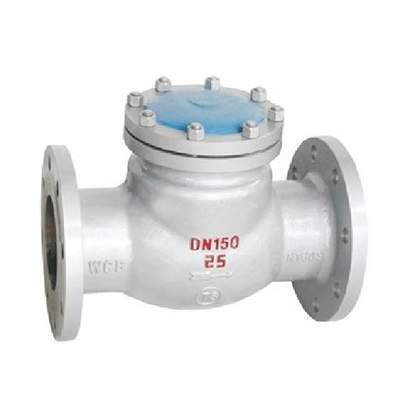Welcome to My Blog!
Before we dive into the content, I’d love for you to join me on my social media platforms where I share more insights, engage with the community, and post updates. Here’s how you can connect with me:
Facebook:https://www.facebook.com/profile.php?id=61563865935136
Now, let’s get started on our journey together. I hope you find the content here insightful, engaging, and valuable.
Introduction

Stainless steel check valves are essential components in fluid systems, designed to allow flow in one direction and prevent backflow. Their robust construction and corrosion resistance make them ideal for a wide range of applications, from industrial processing to plumbing systems. This guide provides a detailed overview of stainless steel check valves, covering their types, applications, selection criteria, installation, maintenance, and more. Understanding these valves is crucial for anyone working with fluid systems. This comprehensive resource will empower you to make informed decisions about check valve selection and maintenance.
Understanding the Function of Stainless Steel Check Valves
How Check Valves Work
Check valves operate automatically, without the need for external control. They rely on the pressure of the fluid to open the valve and allow flow. When the flow stops or reverses, the valve closes to prevent backflow. This mechanism protects equipment, prevents contamination, and ensures system efficiency. This automatic operation makes them highly reliable and low-maintenance. They are a critical component in safeguarding system integrity.
Benefits of Using Stainless Steel Check Valves
- Corrosion Resistance: Stainless steel offers excellent resistance to corrosion, making these valves suitable for harsh environments and various fluids. This inherent resistance extends the lifespan of the valve and reduces the risk of leaks or failures. It also makes them ideal for applications involving aggressive chemicals.
- Durability: Stainless steel check valves are known for their strength and longevity, ensuring reliable performance over time. Their robust construction can withstand high pressures and temperatures, contributing to long-term cost savings. This durability minimizes the need for frequent replacements.
- Versatility: These valves are available in various types and sizes, catering to diverse applications and flow requirements. This wide range of options allows engineers to select the perfect valve for their specific needs. They can be customized for optimal performance in different systems.
- Hygiene: Stainless steel is easy to clean and sanitize, making it a preferred material for industries with strict hygiene standards. This is particularly important in food processing and pharmaceutical applications. The smooth surface of stainless steel also minimizes the risk of bacterial growth.
Types of Stainless Steel Check Valves
Swing Check Valves
Swing check valves feature a disc that swings open to allow forward flow and closes against a seat to prevent backflow. They are suitable for applications with low pressure drop and minimal flow restrictions. They are also relatively simple in design, making them easy to maintain. However, they may not be suitable for applications with pulsating flow.
Lift Check Valves
Lift check valves have a disc that lifts vertically to allow flow. They are commonly used in applications with high pressure and temperature, as well as in systems where backflow needs to be prevented quickly. Their design allows for rapid closure, minimizing the risk of backflow damage. They are often preferred in critical applications.
Ball Check Valves
Ball check valves utilize a ball as the closing element. They are simple in design and offer reliable performance in various applications, including those with viscous fluids or slurries. The rolling action of the ball helps to prevent clogging. This makes them suitable for applications where debris or particulate matter may be present.
Other Types of Stainless Steel Check Valves
- Dual Plate Check Valves: These valves use two plates that open and close simultaneously, offering a compact design and quick response. Their compact design makes them ideal for space-constrained installations. They also offer a lower pressure drop compared to some other check valve types.
- Wafer Check Valves: Wafer check valves are designed to fit between flanges, making them space-saving and easy to install. They are lightweight and cost-effective. They are commonly used in applications where space is limited.
- Silent Check Valves: These valves are designed to minimize noise and water hammer, ensuring quiet operation in sensitive environments. They incorporate features to dampen the closing action, reducing noise and vibration. This makes them suitable for residential or commercial buildings.
Applications of Stainless Steel Check Valves
Industrial Applications
Stainless steel check valves are widely used in industries such as:
- Chemical processing: Where corrosive fluids are common, stainless steel’s resistance is essential.
- Oil and gas: These valves are used in pipelines and processing equipment, often in harsh offshore environments.
- Water treatment: Stainless steel ensures the purity and safety of treated water.
- Food and beverage: Hygiene and ease of cleaning are paramount in these applications.
- Pharmaceutical: Stringent sanitary requirements necessitate the use of stainless steel.
- Manufacturing: These valves play a crucial role in various manufacturing processes.
Plumbing and HVAC Applications
In plumbing and HVAC systems, stainless steel check valves prevent backflow in:
- Water supply lines: Preventing backflow ensures the safety of the drinking water supply.
- Heating systems: Maintaining proper flow direction in heating systems is essential for efficiency.
- Drainage systems: Check valves prevent sewage or wastewater from flowing back into the system.
- Pump systems: Protecting pumps from backflow damage extends their lifespan.
Other Applications
- Medical devices: Stainless steel’s biocompatibility makes it suitable for medical applications.
- Automotive systems: These valves are used in various automotive fluid systems.
- Aerospace applications: Reliability and performance are critical in aerospace systems.
- Marine systems: Stainless steel’s corrosion resistance is vital in marine environments.
Selecting the Right Stainless Steel Check Valve
Factors to Consider
- Fluid Compatibility: Ensure the valve material is compatible with the fluid being handled. This prevents corrosion or degradation of the valve. Consider the chemical properties of the fluid.
- Pressure and Temperature: Select a valve that can withstand the system’s operating pressure and temperature. Exceeding these limits can lead to valve failure. Consult the valve’s specifications.
- Flow Rate: Choose a valve size that can accommodate the required flow rate without excessive pressure drop. An undersized valve can restrict flow and reduce system efficiency. Calculate the required flow rate.
- Installation Requirements: Consider the valve’s size, type of connection, and space availability for installation. Ensure that the valve can be easily installed and maintained. Check the installation location.
- Maintenance: Select a valve that is easy to maintain and repair. This will minimize downtime and maintenance costs. Consider the availability of replacement parts.
Stainless Steel Check Valve Selection Chart
| Feature | Swing Check Valve | Lift Check Valve | Ball Check Valve |
|---|---|---|---|
| Pressure Drop | Low | High | Medium |
| Backflow | Moderate | Fast | Moderate |
| Viscous Fluids | Suitable | Not Suitable | Suitable |
| Maintenance | Easy | Moderate | Easy |
| Cost | Low | Moderate | Low |
| Space Requirement | Large | Small | Small |
Installation of Stainless Steel Check Valves
Best Practices
- Orientation: Install the valve in the correct orientation to ensure proper flow direction. Incorrect installation can render the valve ineffective. Consult the manufacturer’s instructions.
- Cleanliness: Ensure the piping and valve are clean before installation to prevent debris from interfering with operation. Debris can damage the valve or prevent it from sealing properly. Flush the pipes before installation.
- Support: Provide adequate support for the valve and piping to prevent stress on the connections. Excessive stress can lead to leaks or damage. Use pipe hangers and supports.
- Tightening: Tighten connections securely to prevent leaks. However, avoid over-tightening, which can damage the valve or connections. Use the appropriate torque specifications.
Tools and Materials
- Wrenches: For tightening and loosening connections.
- Pipe sealant: To prevent leaks at threaded connections.
- Thread tape: An alternative to pipe sealant for threaded connections.
- Measuring tools: To ensure proper alignment and spacing.
Maintenance of Stainless Steel Check Valves

Regular Inspections
- Check for leaks, damage, or wear. Regular inspections can identify potential problems early. Look for signs of corrosion or erosion.
- Inspect the disc or ball for proper movement and seating. Ensure that the closing element is moving freely and sealing tightly. Clean or replace any damaged parts.
- Clean the valve as needed to remove debris or buildup. Debris can interfere with the valve’s operation. Flush the valve or disassemble it for cleaning.
Repair and Replacement
- Replace worn or damaged parts promptly. Prompt repairs can prevent further damage and extend the valve’s lifespan. Use genuine replacement parts.
- Use genuine replacement parts to ensure compatibility and performance. Using non-genuine parts can compromise the valve’s performance and reliability. Consult the manufacturer’s catalog.
- Consult the manufacturer’s instructions for specific maintenance procedures. Following the manufacturer’s recommendations can ensure proper maintenance and prevent damage to the valve.
Conclusion
Stainless steel check valves are vital components in various fluid systems, offering reliable performance and protection against backflow. Understanding their types, applications, selection criteria, installation, maintenance, and troubleshooting is crucial for ensuring optimal system operation. By following the guidelines in this comprehensive guide, you can make informed decisions and maximize the lifespan and efficiency of your stainless steel check valves.
FAQ
What is the purpose of a stainless steel check valve?
A stainless steel check valve allows flow in one direction and prevents backflow, protecting equipment and ensuring system efficiency.
How do I choose the right stainless steel check valve?
Consider factors such as fluid compatibility, pressure, temperature, flow rate, installation requirements, and maintenance needs.
How do I install a stainless steel check valve?
Follow best practices for orientation, cleanliness, support, and tightening connections.
